
Ideal Plant Companions When Growing VegetablesA couple of years in a row, after we moved here, we planted a garden. The first one did really well. The 2nd one didn't. We'd always planted the same way, or so we thought.
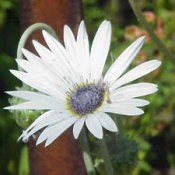
Growing African DaisyAfrican Daisies thrive at temperatures of 75ºF. They will suffer damage if grown below temperatures of 41ºF. Although plants will grow in partial shade they tend to flower more poorly.
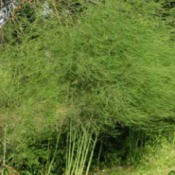
Growing AsparagusAsparagus are perennial vegetables with feathery foliage and edible spears that grown up to 3 feet tall. They are easy to grown and maintain after the first year.
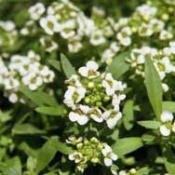
Growing AlyssumWhen planting alyssum, scatter seeds and press them lightly into the ground. Don't cover the seeds, as they need light to germinate. Alyssum makes an excellent, nearly instant ground cover. They are an economical way to fill in garden space and work well to crowd out weeds
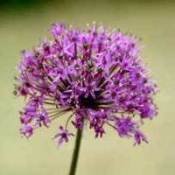
Growing AlliumAllium tends to be resistant to deer, chipmunks, mice and other rodents, and great for attracting butterflies and hummingbirds.
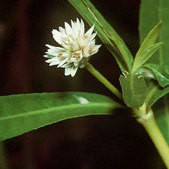
Growing AlternantheraAlternanthera make excellent fillers for container displays due to their compact growth. Space four inches apart for a carpet effect and pinch back occasionally to keep plants bushy. Pot plants and bring indoors as a house plant for winter.
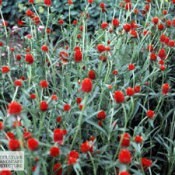
Growing AmaranthGlobe Amaranth is native to Panama and Guatemala in Central America. It was once a favorite of English gardens and also attracts butterflies.

Growing AmaryllisAmaryllis couldn't be easier to grow. Most garden and home centers offer them for sale during the winter season when they are commonly grown to bloom for the holidays.

Growing Anemone (Greek Wind Flower,...Plant Greek Wind Flower bulbs in zones 4-8 in the spring. They grow to a height of 4" to 6" and prefer rich, well-drained soil and sun to partial shade. Plant Poppy Anemone bulbs in zones 8-11 in the spring. They grow to heights of 12" to 18" and prefer light sandy soil and full sun.
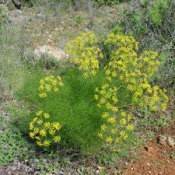
Growing FennelA beautiful addition to any perennial herb garden, fennel has thick, 5 to 6 foot tall stems, feathery green or bronze foliage and impressive rays of tiny, umbel-shaped yellow flowers.
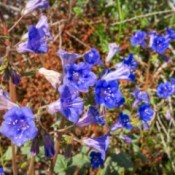
Growing California Blue BellsIn climates with mild winters, sow in the fall. In cooler climates, sow seed immediately after ground dries out. Regular watering will help to extend their short bloom time.
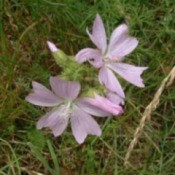
Growing Musk MallowSow seeds or transplant seedlings into warm soil. Seedlings should be spaced approximately 18 inches apart. Seeds should be soaked for 24 hours prior to planting to speed germination. If starting indoors, use individual peat pots to avoid disturbing roots while transplanting.
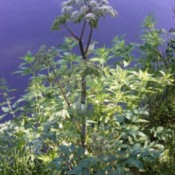
Growing: AngelicaPrefers moist, fertile, slightly acidic soil. Transplant seedlings when they have 4 to 6 leaves. Angelica prefers cool areas of the garden. It blooms in midsummer of the second year, then dies, and needs large amounts of space.
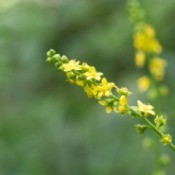
Growing AgrimonyModest and almost weed-like in appearance, Agrimony is an aromatic plant with one or more stems supporting tall, slender spikes of flowers and a few weak branches.
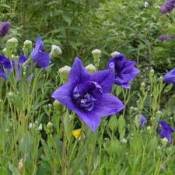
Growing Balloon Flowers (Chinese...In the spring, sow seeds directly into ground where you want them to grow. Keep sowing seeds up to 2 months before fall frost date. Seeds can be started indoors 6-8 weeks before transplanting.
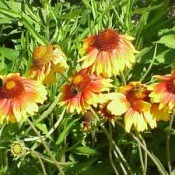
Growing Blanket FlowerStart seeds indoors 6 to 8 weeks before the last spring frost date or sow them directly into the ground in spring. Seeds need light to germinate so do not cover them, simply press them into the surface of the soil. . .
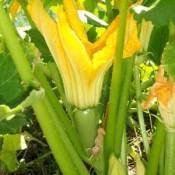
Growing ZucchiniZucchini is a fast growing member of the squash family (cucurbitaceae) with a long, cylindrical shape, smooth, dark green (sometimes yellow) skin and creamy white-green, milky-flavored flesh. Zuccini are also referred to as courgette, especially in Europe.

Growing TulipsPlant bulbs from 4 to 8 inches deep and 4 to 8 inches apart in the fall. Bulbs should be free of mold or black spots and the outer tunic (brown layer) should be intact. . .

Growing: Winter Aconite (Eranthis hyemalis)Plant tubers 3 inches deep and 4 to 6 inches apart in the fall for spring flowers. Tubers do not like to be dry and can be soaked overnight before planting for a faster start. . .
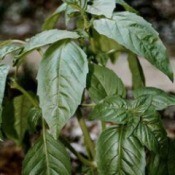
Growing BasilBasil is one of the most widely grown herbs in the world. Originally from India, it is grown for its clove-like smelling, soft green or purple foliage and is often associated with its culinary use in Italian dishes.
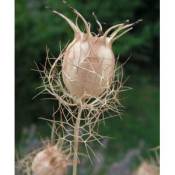
Growing: Love-In-A-MistLove-in-a-Mist has been cultivated for over 400 years and is a relative to the buttercup. The aromatic seeds are used in the Middle East for culinary and medicinal purposes...

Growing: LobeliaLobelia was first introduced in the wild form over 200 years ago from the Cape of Good Hope region in South Africa. Also known as Indian tobacco, it has historically been smoked as a treatment for respiratory ailments by Native Americans.

Growing: LavateraIn the spring, sow seeds directly in the ground or place seedlings 3 to 4 inches deep at 3-foot intervals. Lavatera are wildflowers and difficult to transplant so they should be planted where you want them to grow...
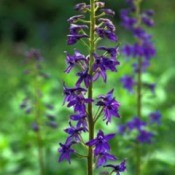
Growing: LarkspurSow seeds directly in garden in the spring. Sow them in the location you want them to grow as Larkspurs do not like to be transplanted. Plants should be spaced about 6 to 8 inches apart...

Growing ImpatiensMost often bought as transplants, but seeds can be started indoors 8 to 10 weeks before last frost date. Seeds need light to germinate so press them into seed starting.
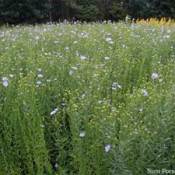
Growing Flowering FlaxSow seeds directly outdoors in fall or in early spring as soon as soil is workable. They should be spaced so plants grow approximately 8 to 10 inches apart.
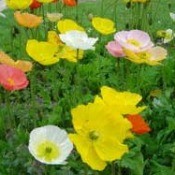
Growing: Iceland PoppyDespite being true perennials, Iceland poppies are usually grown as annuals or biennials. To use them as cut flowers, sear off stems with a lit match or lighter and place them in very warm water.
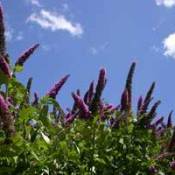
Growing Butterfly BushFor continuous flowers all summer, trim spent flower clusters off just above a set of leaves and plants will send out two new spikes to replace the one you cut off. As they name suggests, the Butterfly Bush is very attractive to butterflies...

Growing Azaleas and RhododendronsSpring and fall are the best times to purchase and plant azalea and rhododendron clumps. If you buy whole balled or burlap wrapped plants, late summer is the best time for planting...

Growing: AstilbePurchase a nursery raised pot containing numerous plants and divide them up when you plant them. For the first summer give them extra attention...

Growing Chinese Ground OrchidPlant rhizomes 4 inches deep and space them about 6 inches apart. Apply a liquid fertilizer every 3 weeks during growing period, and after flowering let them die back naturally...
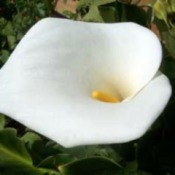
Growing: Calla LilyCalla lilies need to be planted deeply for their size. Plant them at a depth of 4 inches, spacing each bulb 12 inches apart. In cooler...
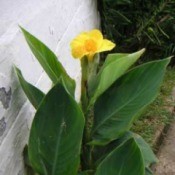
Growing CannasPot rhizomes in a soil-less mix, pointed end up and barely cover them. Keep them warm (75ºF) and slightly moist until new growth appears. Then move them to a sunnier location and feed every two weeks with a 1/2 strength houseplant fertilizer.
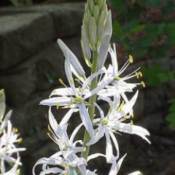
Growing Camassia (Wild Hyacinth)There are several common species of Camassia worthy of planting in your perennial garden. The bulbs of the first, Camassia quamash, were once eaten by Native Americans and are known for their deep blue foliage.

Growing CaladiumCaladium plants are also good choices for containers. Today's hybrids are the result of widespread breeding between tropical species.
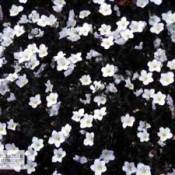
Growing: Browallia (Amethyst Flower/Star Flower/Bush Violet)Browallia make a good short-term houseplant. At summer's end, transfer a few plants into pots and bring indoor for several more weeks of enjoyment...

California PoppyCalifornia Poppies grow well in poor soil. Too much fertilizer will result in poor flowering. They are drought tolerant and should be watered only moderately unless grown in arid climates.
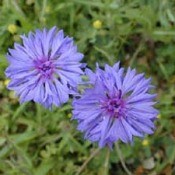
Growing Bachelor's Button (Cornflower)Bachelor Buttons grow wild in the fields of southern Europe. During the time when Napoleon forced Queen Louise of Prussia from Berlin, she hid her children, including her son Wilhelm, in a cornfield where they wove wreaths of Bachelor Buttons to pass the time....
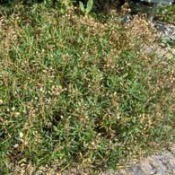
Growing: CandytuftSow seed directly in ground in late spring and cover seeds with 1/8" of soil, or start indoors 6 to 8 weeks before last frost. If starting indoors, use peat pots to minimize transplanting shock and space seedlings 8" to 10" apart...
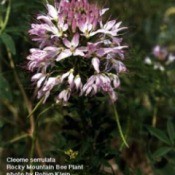
Growing Cleome (Spider Flower)Start seeds indoors four weeks before the last frost or sow seeds directly in the ground after the danger of the last frost has passed. When planting, just press seeds lightly into the soil, as they need light to germinate...
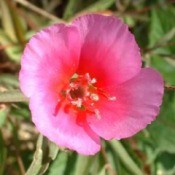
Growing: Clarkiasow seeds in early spring as soon as soil can be worked. Clarkia doesn't transplant well and should be sown in the location where you want it to grow. Clarkia will adapt to poor soil conditions...
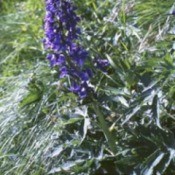
Growing: DelphiniumStart with bedding plants or sow seeds indoors in late winter. Seeds should be cold treated for two weeks before being moved to a warmer temperature for germination. Mulch plants in spring to keep the soil moist and cool...
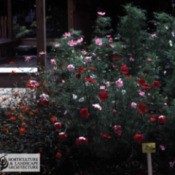
Growing: Cosmos (Mexican Aster)Scatter seed outdoors directly in desired location as soon as danger of frost has passed, or start indoors 4 to 6 weeks before last frost date. Cold treat seeds for two weeks before moving to warm place for germination...
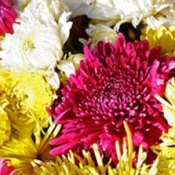
Growing Chrysanthemum (Mums)Mums can be grown as perennials if cold-hardy cultivars are chosen. Although often planted in late summer and treated as annuals, setting them out in the spring will ensure they have enough time to establish roots to survive harsh winters...
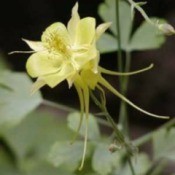
Growing ColumbineSow seeds in pots or directly into the ground in early spring to early summer. Seeds need light to germinate so do not cover them with soil, but press them lightly into the surface of the soil. Plants tend to die out in 3 to 4 years...
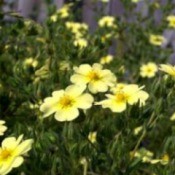
Growing Cinquefoil (Bush)Start from seeds by sowing in containers in a cold frame during the fall or spring. Starting in early summer and producing less toward fall, these low-growing plants flower longer over the course of a season than most other shrubs...
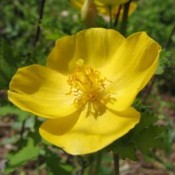
Growing Celandine Poppy (Wood Poppy)Plants should not be allowed to dry out between watering. They tend to be quite prolific if planted in good soil and grow best when planted in locations toward the sunnier side of the shade spectrum...
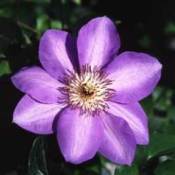
Growing ClematisClematis do not wrap their stems around a support while they climb. Instead, their leaf stems reach out for objects to wrap around-preferably structures made from wood or metal pieces less than 1 inch across...
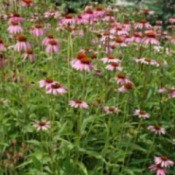
Growing Coneflower (Echinacea)Sow seeds in pots. Set the pots outside over winter or cold treat them for a month before moving them to a warm place to germinate.

When to Harvest Your VegetablesYou're growing your own vegetables and you can't wait to pick them. Well, you probably need to wait. But for how long? When will that tomato be ready? How about the cucumbers?

Growing Sanvitalia (Creeping Zinnia)Sow seeds directly outdoors as soon as soil is warm or start indoors 6 to 8 weeks before your last frost date. The seeds need light to germinate so do not cover them with soil, just press them gently into the surface of the growing mix...
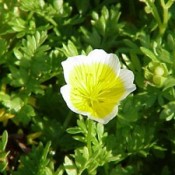
Growing: Meadow FoamSow seeds directly in the garden in fall or early spring in a sunny location where soil stays consistently moist (not wet). Germination takes about three weeks. Seedlings should be thinned to 6" apart. If soil is nutrient rich, fertilizing should not be necessary.
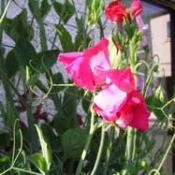
Growing: Sweet PeaSow seeds directly where they are to grow. Place them 6 inches apart and 1 to 1 1/2 inches deep. Soak seeds for 24 hours prior to planting to speed germination. Purchased seedlings should be spaced from 3 to 4 inches apart. Deadhead spent flowers for continuous blooming until leaving some for self-seeding the end of summer...

Growing NasturtiumNasturtium's peppery-flavored flowers are good to eat and taste good in salads. The flower buds and seedpods are also edible. Pick them just before they ripen and store them in a jar full of vinegar for three days...
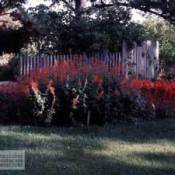
Growing SalviaSow seeds directly into ground in early spring or start indoors 6 to 8 weeks before last frost date. Some need light to germinate and should not be covered, but simply pressed lightly into the soil. Seedlings are also widely available for transplanting and should be spaced 10 to 20 inches apart...

Growing Shirley PoppyAs poppies go, these are the easiest to grow. Broadcast the seeds outdoors in late fall (in cooler zones), or early spring (in warmer zones). Mix the tiny seeds with fine-grained sand for more even dispersal. The seeds need light to germinate so don't cover them with soil...

Growing Morning GloryA guide to growing morning glory. Morning glories are easy to start from seed. Soak seeds for 24 hours or nick the hulls prior to planting to speed germination, then sow them 1/2" deep directly outdoors.
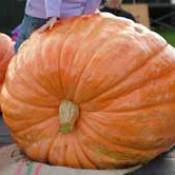
Growing Monster VegetablesHave you ever wondered how people grow those gigantic vegetables that you see at the county fair? You've seen them-the scale crushing pumpkins that weigh in at 1,000 pounds, the 6 pound carrots and the cabbage heads twice the size of basketballs.
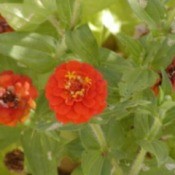
Growing ZinniaSow seeds directly outdoors where you want them to grow as soon as soil has warmed up, or start seeds indoors 6 weeks before your last frost date. If starting indoors, sow seeds into individual peat pots...
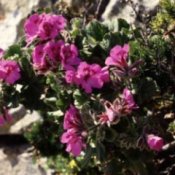
Growing GeraniumThe best way to start geraniums is by purchasing plants, because seeds take around 5 months to flower. After acquiring one plant, take 4-inch cuttings and keep them as house plants over winter until transplanting them in the spring after danger of frost has passed.
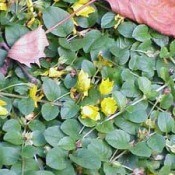
Growing Creeping Jenny (Moneywort, Creeping...Purchase seedlings or transplant from establish plants anytime during the growing season. Plants spread rapidly and should be spaced at least 12 to 18 inches apart. Flowers appear in midsummer and last several weeks.
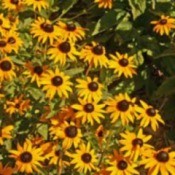
Growing Gloriosa DaisySow seeds directly into the garden in the spring two weeks before the last frost date, or start seeds indoors several weeks before the last spring frost date. Don't cover seeds with soil as they need light to germinate, just press seeds lightly into the surface of the soil.
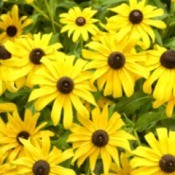
Growing Black-Eyed Susan (Rudbeckia)Purchase plants in the spring or start your own by sowing seeds directly into ground or into pots in the early spring or late fall. Seeds need light to germinate so don't cover them, but press them gently into the surface of the soil.
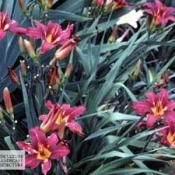
Growing DayliliesDaylilies are one of the hardiest and easiest perennials to grow. Although the flowers are only open for one day, each plants produces lots of buds and many varieties bloom continuously over the entire season.
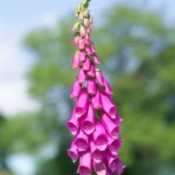
Growing FoxgloveThe name "foxglove" is derived from folklore, where as one story goes, the plant was originally called folk's glove, the "folks" being woodland fairies and elves. The fairies and elves distributed the flowers to foxes so they could wear them as gloves while raiding henhouses...
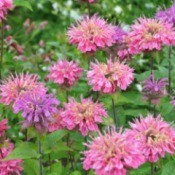
Growing Bee BalmPurchase a young plant or sow seeds directly outdoors two weeks prior to the last spring frost date or in early fall at least two months before the first frost date.
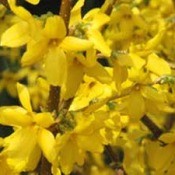
Growing ForsythiaPurchase plants or start with softwood cuttings from new growth in late spring or early summer, or semi-hardwood cuttings in mid to late summer. Plants can also be propagated over winter by layering.
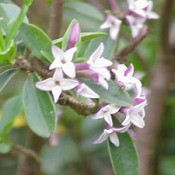
Growing EpimediumPlant from purchased seedlings in spring or fall or by division from mature plants in mid summer. Space plants 8 to 10 inches apart in moist, well-drained soil.
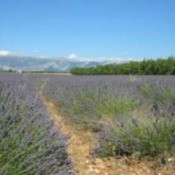
Growing LavenderWatering is unnecessary with well-established plants-except during extreme drought conditions-lavender does not like wet feet, so well-drained soil is a must. Trim plants lightly each year after flowering or cut them back more severely every few years to keep them bushy.
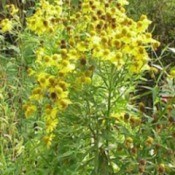
Growing: Helenium (Sneezeweed, Helen's Flower)Purchase plants from nurseries in summer and fall or start seeds indoors several weeks before last frost date in the spring. Plants should be spaced 12 inches apart and mulched with 3 inches of compost around their base to help keep their roots moist...
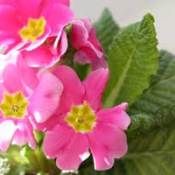
Growing PrimrosePurchase plants in spring or grow from seeds sown in pots in early spring or fall. If plants start to lose vigor they probably need to be divided. Once their flowering period starts to end, dig up and divide crowded plants...
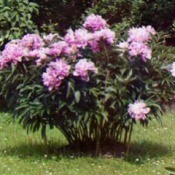
Growing: PeonySome peonies secrete a nectar to attract ants, which in turn help them open their dense double flower heads. Once open, the ants disappear...
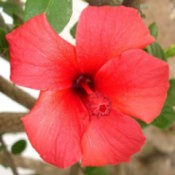
Growing HibiscusRegular pruning keeps plants shapely and invigorated. New growth starts below any cuts made, so plan accordingly when stepping back to assess the plants overall shape.
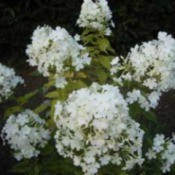
Growing PhloxSeveral species of phlox are commonly grown in the gardens of North America. Moss phlox is a low growing variety that thrives in full sun. Wild blue phlox and creeping phlox both form broad clumps of fragrant flowers suitable for shade gardens. Tall garden phlox needs staking and is most susceptible to powdery mildew. Annual varieties can be grown from purchased transplants or seeds sown directly into the garden several weeks before your last frost date...
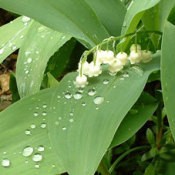
Growing Lily-of-the-ValleyStart with purchased plants in early spring or fall. Plants should be spaced about 4 inches apart. Plants will benefit if mulched with 2-3 inches of compost to keep soil moist...
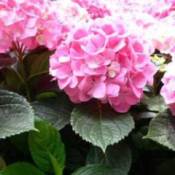
Growing HydrangeaPlant in spring or early fall from cuttings or purchased plants. Dig holes as deep as the existing root ball, but three times wider to accommodate the lateral spreading roots...
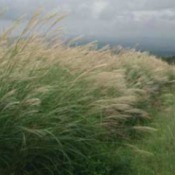
Growing Ornamental GrassesGrowing requirements vary by grass type. Care should be taken to provide adequate space for growth, without allowing grasses to take over your garden. Ornamental grasses should be spaced as far apart from other plants as they are tall....
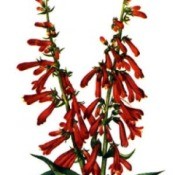
Growing Penstemon (Bearded Tongue)Purchase plants in summer while in bloom to ensure you get the color you want. Water regularly during the first season. Once plant is established it will be fairly drought tolerant. In warmer zones, cut back spent stems to encourage a second wave of flowers in late summer to early fall.
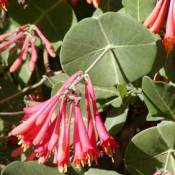
Growing HoneysuckleThere are over 180 species of honeysuckle shrubs and vines growing in a variety of habitats. Growing requirements will vary some according to species. Generally speaking, purchased plants or rooted cuttings are best planted in the fall.
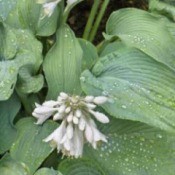
Growing HostaSlugs are common pests to Hostas and can munch large, unsightly holes in their leaves. Creating a barrier of coarsely crushed eggshells around the base of plants will make slugs think twice about crossing.

Growing CrocusBuy spring flowering crocus corms to plant in the fall (or vice versa). Plant in groups of a dozen or more for the best show. Plant them at a depth of 3 to 4 inches spaced about 3 inches apart.
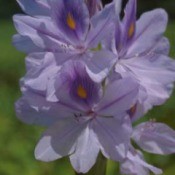
Growing HyacinthIn most zones, bulbs can be planted to a depth of 4 to 5 inches. Colder zones may need to plant as deep as 8 inches and add mulch to protect the bulbs over winter. Remove the mulch in spring after frost danger has passed.
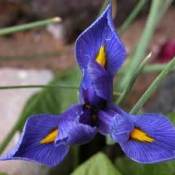
Growing Miniature Iris (Dwarf Iris)Plant Dwarf Iris in the spring or summer from potted plants or bare-root divisions. Bulbs should be spaced 3 inches deep and 6 inches apart in a sunny location with well-drained soil.
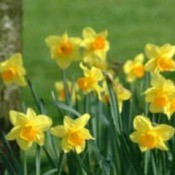
Growing Daffodil (Jonquil)Purchase bulbs for planting in the summer or fall. Plant bulbs two times as deep as the bulb is tall (about 4 to 6 inches below the surface). Daffodils don't like soggy soil...
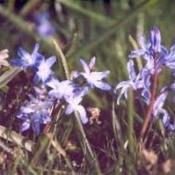
Growing Chionodoxa (Glory of the Snow,...Plant in fall from rhizomes, corms, or bulbs (including offsets) or if you have the patience, start the plants from seeds sown directly into the garden in the fall. Glory of the Snow appreciates moist soil so keep plants watered consistently through the growing season...
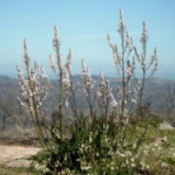
Growing Foxtail LilyIn the fall, plant tubers 6 inches deep and approximately 36 inches apart. Plants need regular watering during the growing season and should not be allowed to dry out.
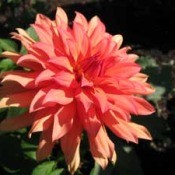
Growing DahliaStart with bare-rooted plants in the spring or sow seed indoors from four to six weeks before your last frost date. Seedlings should be pinched off when they are 4 to 6 inches tall to encourage bushier growth.
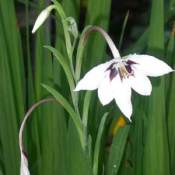
Growing Acidanthera (Peacock Orchid)Plant in clusters of 5-7 for best show. In the spring, corms should be planted three inches deep and six inches apart. This plant requires a long growing season (up to 20 weeks) and should be started indoors 1 month before the last frost in northern zones.
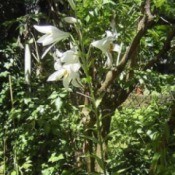
Growing: Madonna LilyMadonna lilies are different from other lilies in that they grow their foliage in the fall, bloom in the spring and go dormant in the summer. For this reason, bulbs should be planted around mid-September to see new growth in the fall.
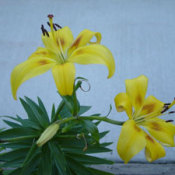
Growing LilyBulbs generally available during the spring or fall. If you're buying bulbs in the fall, make sure you get them in the ground before it freezes so they have time to establish some roots.

Growing Guernsey LilyPlant bulbs in mid summer or early fall. The bulbs should be planted about 8 inches deep and spaced about 8 inches apart. Guernsey lilies will flower in mid summer and follow with leaf growth, which will remain green and actively growing until flower stalks appear the next season.
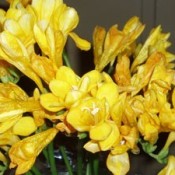
Growing FreesiaFreesia is tender and delicate and really only grows well outdoors in the warmer zones although they can be grown indoors in cooler zones. Because they are easily damaged, it is best to grow them in containers.
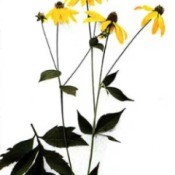
Growing RudbeckiaPurchase plants in spring or start them from seeds sown directly into the garden in the spring or fall. Seeds can also be sown in pots in early spring or fall and set outdoors in a protected location. The exception is Gloriosa seeds.
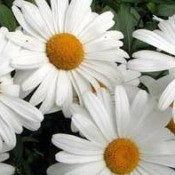
Growing Shasta DaisySow seeds directly into the garden in spring for flowers the following summer. Purchase plants from the nursery for first year blooms. Remove spent flowers to extend blooming period and divide clumps every 3 to 4 years after they finish flowering.
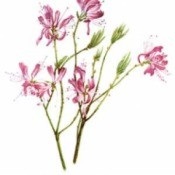
Growing Rhododendrons (and Azaleas)Spring and fall are the best times to purchase and plant azalea and rhododendron clumps. If you buy whole balled or burlap wrapped plants, late summer is the best time for planting. You can grow both of these plants from 4 " cuttings taken in late spring and early summer.
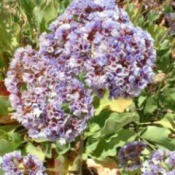
Growing StaticeStart seeds indoors 6 to 8 weeks prior to last frost date or sow directly outdoors in spring after danger of frost has passed. Plants may be divided in the spring or cuttings can be taken when dormant in mid-winter and grown in pots indoors or in a cold frame until transplanted in the spring...
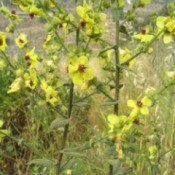
Growing: Verbascum (Ornamental Mullein)Mulleins are somewhat deer resistant. These flowers are also said to have medicinal properties that ease digestive ailments. Widely distributed throughout the United States, wild species of common mullein are considered an ecological threat and a highly invasive species...
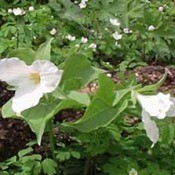
Growing: Snow Trillium (Wake-Robin)Plant rhizomes in the fall 2 to 4 inches deep and 5 to 8 inches apart. Apply mulch to protect plants from the cold. If you have patience, seeds are in the form of berries and can be separated from the pulp and planted in the fall when they become ripe. They take two years to germinate and another two years to flower...
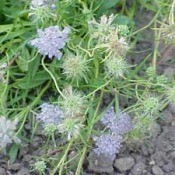
Growing Scabiosa (Pincushion Flowers)Purchase plants or start from seeds sown indoors a few weeks before your last frost date or sow them directly into the garden after the danger of frost has passed. Scabiosa is a low maintenance plant, but does not tolerate soggy soil-especially during the winter...
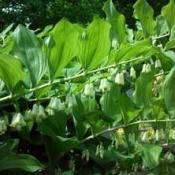
Growing Solomon's SealSolomon's seal is native to North America and well-suited to growing in the coniferous forests of the Northeastern and Southeastern United States as well as deciduous woodland and prairie environments. Plants tend to be deer resistant...
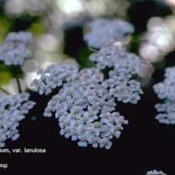
Growing YarrowStart with purchased plants or sow seeds indoors in early winter if you want plants to flower the first year. Deadhead flowers to prolong blooming period and divide them every 3 to 5 years in the spring or fall if they get crowded...
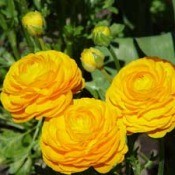
Growing: RanunculusClaw-shaped ranunculus tubers come in different grades (sizes). The largest and most popular are called jumbos. They are 2 1/2 to 3 1/8 centimeters in circumference and will produce up to 35 flowers per bulb. Spring-planted ranunculus will bloom in June or July...